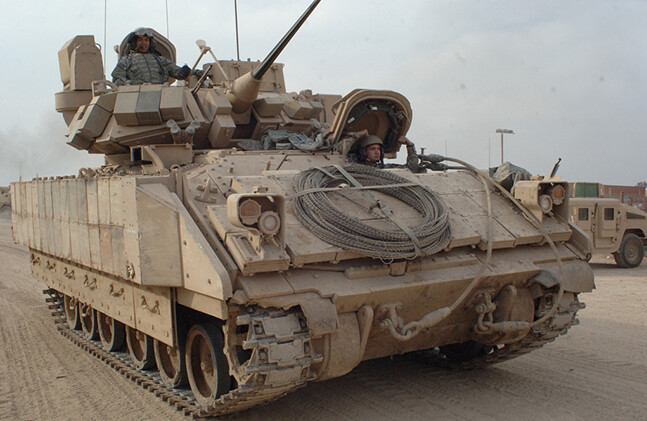The Pentagon has recently released optimistic figures about violence in Iraq. What they neglect to say is that while overall violence has declined there in the last few months, civilian deaths at U.S. hands increased approximately 70 percent in 2007 over the prior year. Non-combatant death at U.S. hands grew in Afghanistan by a similar percentage. This surge in non-combatant death directly caused by the U.S. accompanies the surge in U.S.-led operations in both countries. Understandably, resentment of the U.S. has also increased in Afghanistan and Iraq.
According to conservative figures provided by the non-governmental organization Iraq Body Count, in 2006 the U.S. was directly responsible for 394-434 deaths in Iraq; in 2007 the U.S. directly caused between 669 and 756 deaths. These figures do not count those non-combatants killed in firefights, where the U.S. might claim civilians were caught in the crossfire. Those numbers have also increased: in 2006, between 544 and 623 were killed in Iraq during incidents involving insurgents and coalition military forces; in 2007, between 868 and 1, 326 were killed in these circumstances.
Non-combatant deaths in Afghanistan at U.S. and NATO hands grew approximately 74 percent last year. Human Rights Watch's Marc Garlasco estimates that in 2006, NATO and U.S. forces killed approximately Afghan 230 non-combatants; in 2007, they killed about 400 Afghan non-combatants with the greatest portion of the increase coming from air operations.
Responding to these deaths in June 2007, Afghanistan's President Karzai accused international forces of "careless operations." In November 2007, Louise Arbour, the United Nations High Commissioner for Human Rights said that non-combatant deaths at the hands of international forces in Afghanistan had reached an "alarming level."
The U.S. says it takes particular care in both Afghanistan and Iraq to avoid killing or injuring non-combatants. And it is true that the rules of engagement have become more restrictive and that the U.S. has used more precision guided munitions in both conflicts than in any previous wars. So, what explains this surge in non-combatant deaths? There are three main factors.
First, the United States has significantly increased "close air support" operations in both countries. In other words, when U.S. and NATO ground forces come into contact with insurgents, the U.S. has increasingly tended to call on helicopters and fixed wing aircraft to fire on targets. While pre-planned attacks can take risks to civilians into account through "collateral damage estimates," close air support operations are done on the fly and often with poor intelligence. The majority of the deaths recorded in the last year were caused in these operations.
Second, while the Pentagon has increasingly restricted the rules for when its soldiers can use deadly force, the rules of engagement are too permissive, permitting the use of force if the soldier feels threatened with "hostile intent."
Third, U.S. forces are understandably stressed and therefore sometimes too quick to fire in ambiguous situations. Troops rotations are long, combat stress is high, and returning soldiers report attitudes of contempt for Iraqi and Afghan civilians. This combination of contempt, fear, and fatigue is a toxic brew.
The Pentagon likes to say that these are accidents—that in war, non-combatant deaths, although tragic, are inevitable. Yet, there is nothing inevitable about these deaths.
One example suggests how the U.S. can reduce non-combatant death if it wants to. In 2005 the U.S. was killing an average of one Iraqi per day at checkpoints. Lt. General Peter Chiarelli saw this as a problem—as he said, it put U.S. forces in greater danger, because it increased Iraqi resentment:
"We have people who were on the fence or supported U.S. who in the last two years or three years have in fact decided to strike out against us. And you have to ask: Why is that? And I would argue in many instances we are our own worst enemy."
Chiarelli argued that if fewer civilians were killed in escalation of force incidents at checkpoints, "I think that will make our soldiers safer." After modifying the rules of engagement at checkpoints in 2006, the U.S. killing of civilians went from an average of one each day to one per week.
The first step in reducing these civilian deaths is acknowledging them. The U.S. military does not systematically publish its own figures of the deaths it causes. Although we have used conservative counts of U.S.-caused death, some sources and methods suggest the figures are higher. It is uncontested, however, that the military surges in Iraq and Afghanistan have increased U.S. and NATO-caused civilian deaths. These deaths refute the claim that the military surge has reduced violence in Iraq.
Neta C. Crawford is a Professor of Political Science at Boston University; Catherine Lutz, a Professor of Anthropology at Brown University, is a fellow of the Radcliffe Institute for Advanced Studies at Harvard; Robert Jay Lifton, MD is a Lecturer in Psychiatry at Harvard Medical School and Distinguished Professor Emeritus at the City University of New York; Judith L. Herman, MD is Clinical Professor of Psychiatry at Harvard Medical School; Howard Zinn, a historian, is Professor Emeritus at Boston University.
We welcome comments on this article. Contact [email protected]




